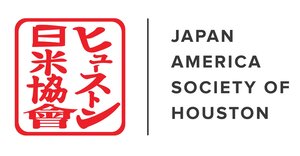Japanese Language Program
Course Descriptions
Just Getting Started (Pre 101-1)
Students learn:
Basic expressions for:
Greetings
Self-introduction
Communicating with front desk clerks at hotels
Communicating with salesclerks
Communicating with taxi drivers, bus drivers, etc.
Buying over-the-counter medication
101-1 | Japanese for Busy People Vol 1 (4th Ed.) | Lessons 1-3
Students learn:
Japanese Phonetic Symbols: Master the basics of Hiragana
Greeting and Self-Introduction Expressions: Acquire common expressions for greetings and self-introductions
Numbers 1 through 10: Learn numbers from 1 to 10
Demonstrative and Interrogative Pronouns: Understand demonstrative pronouns and interrogative pronouns (who, whose, what, what time, how much)
Goals:
Achieve proficiency in recognizing and using Hiragana
Gain insight into Japanese culture
Comprehend the distinctions between Japanese and English syntax
101-2 | Japanese for Busy People Vol 1 (4th Ed.) | Lessons 4-7
Students learn:
Japanese Loan Words: Learn Katakana symbols used for loan words
Large Numbers: Understand numbers greater than 10
Counters: Familiarize yourself with counters for solid items, floppy items, and rod-like or cylindrical items
Interrogative Pronouns: Grasp interrogative pronouns such as "how much," "where," "when," and "with whom"
Verbs of Movement: Learn verbs for "go," "come," and "return"
Vocabulary for Destinations: Expand your vocabulary related to destinations
Particles に: Understand the use of the particle に for direction and time reference
Japanese Currency: Familiarize yourself with Japanese currency
Days of the Week and Month: Learn the days of the week and days of the month
Goals:
Able to recognize Katakana symbols proficiently
Can identify and understand vocabulary related to transportation and destinations
Capable of communicating effectively with salesclerks
Can recognize and understand the prices of merchandise
Destination Arrival Inquiries
102 | Japanese for Busy People Vol 1 (4th Ed.) | Lessons 8-11
Students learn:
A variety of verbs and their conjugations (affirmative, negative, present, and past tense)
Two types of adjectives and conjugations (i-adjective and na-adjective
The time reference words and means of transportation
The interrogative pronouns (where, with whom, when)
Counter for people
Goals:
Can talk about daily activities
Can talk about activities that one is frequently engaged in
Can talk about the plan on weekends
Can ask and answer the time, days, or dates for a meeting or a business appointment
Can express impressions about experiences
Can place an order at Izakaya (Japanese-style bar)
104 | Japanese for Busy People Vol 1 (4th Ed.) | Lessons 17-20
Students learn:
Dictionary form of verbs and the Te-form conjugation for various expressions
Verb Masu-Form Stem たいです
Goals:
Express desires effectively
Request using appropriate conjugations
Describe sequences of actions with suitable conjugations
Recognize basic vocabulary related to communications, positions, directions, and giving directions
Develop conversation skills for:
providing directions and estimating travel time
Requesting deliveries
Requesting room service
Describing daily schedules effectively
201 | Minna no Nihongo Vol 1 | Chapters 12, 13, 16
Students who have finished Minna no Nihongo Vol. 1 Chapter 11 or at the equivalent level learn:
Comparatives
Superlatives
Temporal Clause: Te Form + から after doing
Te Form for adjectives
…は~が Construction (が for specifier)
…が ほしい
…が すき
verb masu form stem + たいです
303 | Minna no Nihongo Vol 2 | Chapters 32-34
Students who have finished Minna no Nihongo Vol. 2 Chapters 29-31 or at the equivalent level learn:
Giving advice Ta-Formほうがいい Negative Plain Formほうがいい
Speculation でしょう だろう かもしれない
Imperative Forms
Expressing “the same way as~” …とおりに
Expressing ”without doing…” …ないで
Compare and Contrast …てから and …たあとで
Goals:
Can offer advice or make a strong suggestion
Can understand the expression used in the weather forecast
Can express one’s speculation appropriately according to the level of uncertainty
Can use the appropriate imperative form according to various circumstances
Can give instruction with various grammar patterns
Can explain information in chronological order
304 | Minna no Nihongo Vol 2 | Chapters 35-37
Students who have finished Minna no Nihongo Vol. 2 Chapters 32-34 or at the equivalent level learn:
ば conditional forms for describing hypothetical situations
Expressing purpose ように
Expressing a change ようになる
Expressing striving toward a certain state ようにする
Passive Voice
Goals:
Can describe the result of something that might happen (in the present or future) or might have happened but didn't (in the past)
Can express efforts to bring about a desired outcome or prevent an adverse condition
Can convey a sense of damage by the passive voice
Can emphasize the result or the recipient of an action by the passive voice
Can depict objective reality by passive voice when the agents are unknown
Intermediate Japanese Across the Four Language Skills | Ch. 3
Reading:
Learn the necessary travel information by reading guides and columns
Conversations:
Change restaurant reservations over the phone
Ask about the menu and place an order at a restaurant
Writing:
Write a description about the characteristics of a tourist destination
Listening:
Listen to a speech by an Italian exchange student on Japanese behavior and have a class discussion about it
